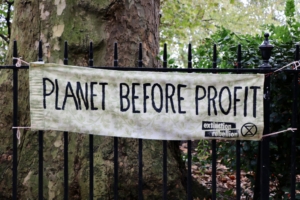The Supreme Court Conundrum
With only eight Justices sitting on the U.S. Supreme Court and a contentious Presidential election underway, a Wall Street Journal editorial declares, “The President’s supporters insist vehemently that, having won the 2012 election, he has every right to try to change the Court’s direction. Yes, but the Republicans won the 2014 election, regaining control of the Senate, and they have every right to resist.”
Profound words. Except that editorial was actually written by The New York Times in 1987, President Ronald Reagan had been reelected in 1984 and the Democrats had taken the Senate back in 1986.
In 2016, with the sudden death of Justice Antonin Scalia, these roles have reversed but the arguments on both sides are much the same. President Obama has publically declared he intends to nominate an “indisputably” qualified candidate for the Court’s open seat, while Senate Majority Leader McConnell declared the Senate should not confirm a new Justice until after the 2016 election. With the President requiring the advice and consent of the U.S. Senate to confirm all judicial appointments, a classic case of DC gridlock is set to ensue.
Subscribe to Receive Insights
"*" indicates required fields
The situation has released a veritable smorgasbord of hypocrisy, with enough to go around. In 2008, Democratic Sen. Pat Leahy argued the “Thurmond Rule,” which, named for the late Senator Strom Thurmond, describes the oft-debated, customary practice of slowing down judicial appointments toward the end of an administration, “is a rule that we still follow.” Yet, in 2016, Leahy argued “There is no such thing as a Thurmond rule. I used to tease the Republicans about it.” There’s also Sen. Chuck Schumer’s 2007 defense of rejecting a President’s judicial nominees who appear outside the “mainstream” to the opposition party.
The “do as I say, not as I do” attitude is also squarely in play at the White House, as President Obama’s press secretary recently admitted the President “regrets” his 2006 Senate filibuster of President Bush’s nomination of Samuel Alito to the Supreme Court. A spokesman for the President claimed the filibuster was the then-Senator’s “way to just throw sand in the gears of the process,” but argued Republicans were taking obstructionism to a new level.
Going forward, there are two potentially inflammatory moves available to President Obama which could allow him to circumvent Senate Republicans. First is a recess appointment, in which the President would appoint a new Justice while the Senate is out of session, allowing Obama’s appointment to begin serving without the advice and consent Republican lawmakers. The second option could be to bet on Democrats retaking the Senate and rush through a judicial appointment process during the final two weeks of his administration next January, before a new President is sworn in but after the new Senate session begins. Both actions would inevitably lead to fury among Republicans and potentially among a large portion of the electorate.
If (when) Obama puts forth a nominee, there is a relatively short list of potential candidates already being circulated. The list is includes currentAttorney General Loretta Lynch, District of Columbia Circuit Court Judges Merrick Garland, Sri Srinivasan (once described as Obama’s “Supreme Court nominee-in-waiting”), Patricia Ann Millet, Ninth Circuit Court of Appeals Judge Jacqueline Nguyen, California Attorney General Kamala D. Harris and U.S. Senator Corey Booker.
None of these names are likely to pass muster with Republicans, which begs the question, why are Republicans so obstinate? Is it just pure partisan obstructionism, or is there something more? Given the past six years of the Obama administration, they have come to expect the White House to prioritize a nominee who embodies virtue signaling rather than the serious jurisprudence needed for the position of Associate Justice of the U.S. Supreme Court. In other words, his pick will be based on giving people the“feels” and mobilizing liberals during an election year while tagging Republicans as backwards-thinking opponents to a barrier-breaking nominee, not on finding the next great American jurist worthy of replacing Justice Scalia.
Considering the White House will likely end up choosing this course of action, coupled with the intensely divided state of American politics, Mitch McConnell may just be right. Even if his motives are political, a call for allowing the 2016 election to offer a new President (and a new Senate) the opportunity to appoint and confirm the next Supreme Court Justice seems like the best thing for a bitterly divided country.
The fact is, we do not know who the next president will be, or from which party they will come. The Senate also hangs in the balance. Let the voters have their say in November about which men and women they wish to entrust this decision to after the election year dust settles. If there is any doubt of the hyper-partisanship of this moment, look no further than the speed with which Justice Scalia’s death transitioned from a mournful news item to a political dogfight. Picturing the lengthy, tumultuous nomination fight guaranteed to exacerbate partisan vitriol, it seems clear that, whatever McConnell’s motives, it may prove best to slow down, take a breath, and let Scalia’s successor take the bench in 2017.



